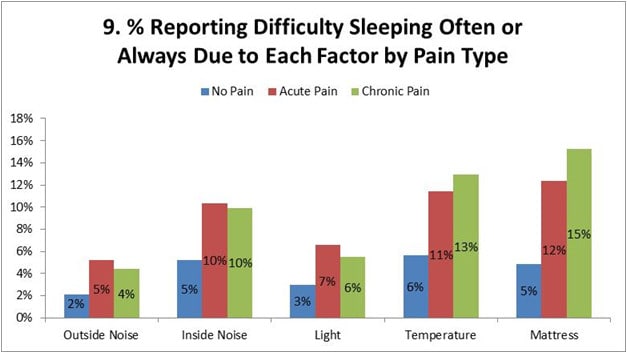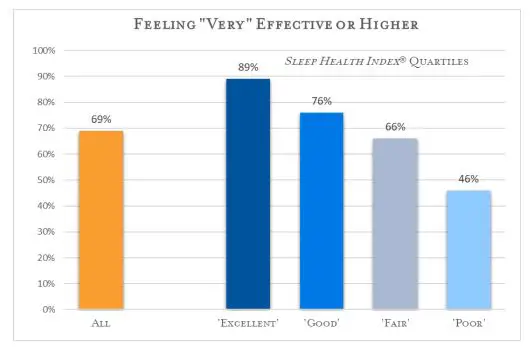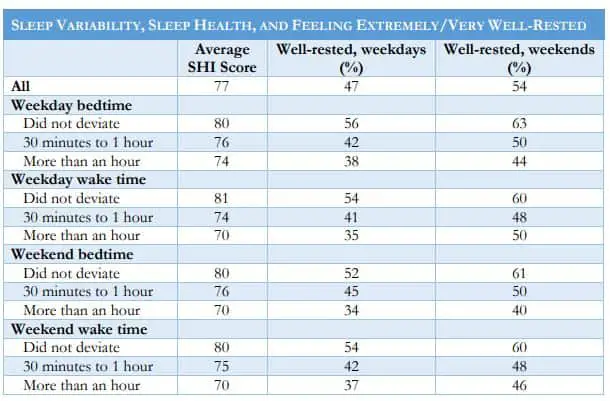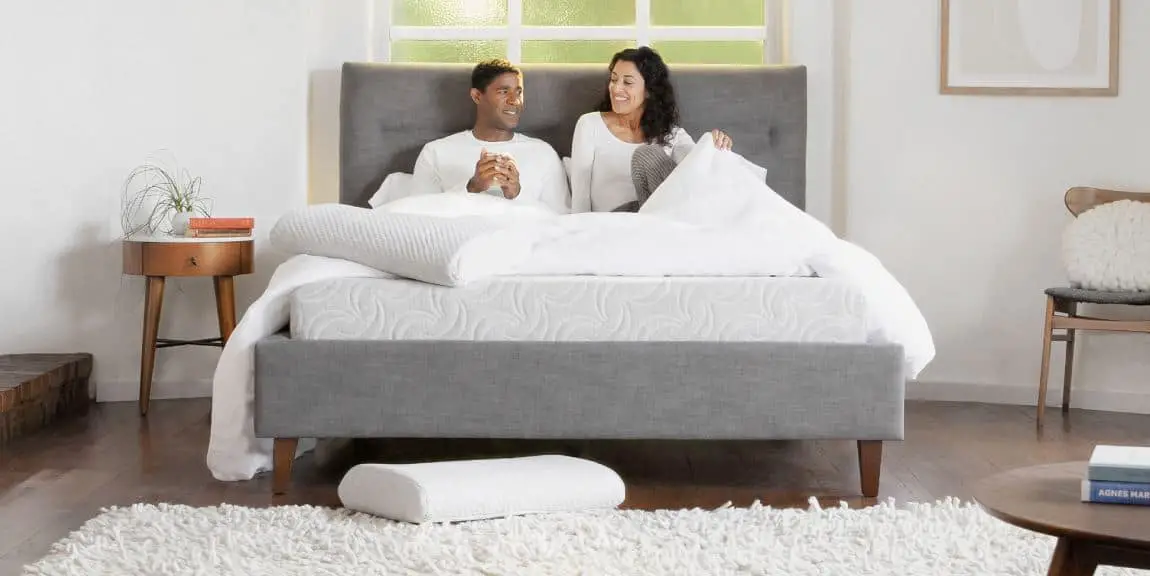The National Sleep Foundation (NSF) is a non-profit organization that promotes better health through sleep education.
Since 1991, the NSF has been conducting a Sleep in America® poll to determine what they call the ‘state of sleep in America.’
You can find an archive of all their polls here.
In today’s post, we focus on the last five polls to find out how well Americans have been sleeping in recent years.
2013: The International Bedroom Poll


This poll explored cultural differences in sleep in six countries: Mexico, Canada, France, Japan, the UK, and, of course, the US.
Here’s a quick summary of what they found. You can read NSF’s comprehensive summary here (pdf).
- Americans don’t sleep enough. The US had the second-lowest sleep time of 6h 31m. The Japanese were the least slept people with an average workday sleep time of 6h 22m. Mexico led with 7h 6m.
- Roughly, half of the respondents in each country said they were getting less sleep than they needed. Germany was the worst at 66% of respondents. In the US it was 56% and in Mexico 40%. Mexicans, it seems, know the importance of a good night’s sleep.
- Americans are more likely to sleep with pets while the Japanese tend to sleep alone or with children even if they have a partner.
- Bedroom hygiene is commonplace in the US. 62% of Americans respondents said they changed sheets every week, 66% said they made their bed every day, and 61% said they aired their bedroom every week. Our neighbors in Mexico are far more careful with bedroom hygiene. The corresponding percentages are 81%, 82%, and 95%. Perhaps this explains their longer sleep period.
- Mexicans are also far more likely than any other country to prefer a fresh and relaxing scent in their bedroom, specifically lavender and Jasmine. In the US, lavender was preferred by more people.
2014: Sleep in the Modern Family
Fig: Number of devices in the parents’ and children’s bedrooms
| Parents | Children | |
| No. of Electronics | 16% | 28% |
| 1 | 30% | 27% |
| 2 | 26% | 18% |
| 3 | 17% | 16% |
| 4 | 7% | 7% |
| 5 | 4% | 4% |
The sleep in America poll 2014 focused on sleep habits in modern families, particularly considering the prevalence of electronic gadgets.
Here’s what they found. Read the report summary here (PDF).
- Among kids and teens, sleep duration got shorter with age. In the 6-11 years age group, only 8% of kids slept 7 hours or less. Among 12-14-year-olds, 29% of kids slept 7 hours or less (against a recommended 8-9 hours), and among 15-17-year-olds, 56% slept 7 hours or less (also against the recommended 8-9 hours).
- 75% of children had at least one electronic gadget in their bedroom. The most common devices were TVs, smartphones, and music players. 85% of parents also had a gadget in the bedrooms, so the trend among kids could be partly a mirror of what their parents were doing (an important lesson for our parents).
- Leaving a gadget on in the bedroom, especially the TV, smartphone, or music player, resulted in significantly less sleep duration among children.
- For parents, evening chores and activities, temperature, noise, light, and pets were the most common causes of difficulty falling asleep.
- For kids, evening activities, homework, and temperature were the most problematic factors leading to poor sleep.
- Kids whose parents had rules about bedtime, caffeine, how long they could watch TV and smartphone use slept on average an hour longer than kids of parents who had no rules.
2015: Sleep and Pain

The 2015 poll focused on something that is a big problem for many people trying to improve their sleep quality – pain.
Here’s what the NSF found regarding the relationship between sleep quality and pain. You can find the full summary here (PowerPoint).
- People who reported better health and good quality of life were highly likely to sleep longer and rate their sleep quality highly.
- High-stress levels were associated with less sleep duration, poorer sleep quality, and increased difficulty falling asleep.
- People with pain, whether acute or chronic, had higher stress levels and, as expected, less sleep duration and poorer sleep quality.
- People with pain were more sensitive to environmental factors that disrupted their sleep, including light, noise temperature, and mattress. For those with chronic pain, the mattress caused the most difficulty in falling asleep.
2018: Sleep Prioritization and Personal Effectiveness

After 2015, the next Sleep in America poll was conducted in 2018. The poll looked at how much Americans prioritized getting good sleep and what they did (or did not do) to get it.
Here are the main findings. You can read the full summary here (pdf).
- Most Americans (65%) know that sleep is important for productivity the next day, but few (10%) prioritize it. Most people prioritize fitness and nutrition, work and hobbies or interests.
- Sleep quality is a strong predictor of how productive you think you are. Among the best sleepers, 89% rated themselves as highly or very productive. Among poor sleepers, less than half (46%) rated themselves as highly or very productive.
- Most people are poor at planning for sleep. 60% of respondents didn’t consider the amount of sleep they’d need when planning the next day.
2019: Sleep Health and Scheduling

This year’s study looked at the link between sleep quality and sleep schedule, finding that, generally, a regular sleep schedule results in better sleep.
Here are the most important points from the poll. You can read the full summary here (pdf).
- Most people with a regular sleep schedule reported feeling more rested.
- Many people say that changing their sleep schedule by as much as an hour affected their well-being and productivity the next day.
- Naps are associated with sleep health. Taking frequent naps is often an indicator of poor sleep quality.
- There are significant differences in sleep health among various groups. More seniors (56%) reported waking up well-rested than 18-29 years old (41%) on weekdays. Fewer white respondents felt well rested (44%) than non-whites (52%). This one’s not surprising: 39% of parents woke up feeling well-rested compared to 50% of non-parents. It is also found from Sleep in America poll that, just 25% of people using sleep medication woke up feeling well-rested compared to 51% of those not using any sleep meds.
Key Takeaways

Here are five key takeaways from these polls.
- Sleep habits and quality among Americans is not terrible but could be better. The areas that need most improvement are sleep prioritization, sleep schedule, and sleep environment.
- The sleep environment matters a lot. This begins with the mattress you are sleeping on. Select the right mattress to avoid pain problems that can severely affect your sleep. Also, keep your bedroom (and bed) cool and reduce light and noises.
- Often overlooked habits like changing your sheets frequently, letting your bedroom air and adding a relaxing scent can significantly improve sleep quality. Just ask the Mexicans.
- Pain and stress management is vital for sleep quality.
- It’s important to prioritize sleep and plan for it with the same seriousness we accord other areas in our lives like work.
Bonus takeaway: Stick to a regular sleep schedule. It’s one of the best productivity hacks.
Affiliate Disclosure
Affiliate Disclosure: I may earn a small commission (at no cost to you) if you purchase a mattress after clicking a referral link or using a coupon code on this site. That said, all content and opinions on this site are my own and are NOT affected by these payments.
This site participates in the Amazon Services LLC Associates Program, an affiliate advertising program designed to provide a means for sites to earn advertising fees by advertising and linking to Amazon.com.
*Amazon and the Amazon logo are trademarks of Amazon.com, Inc, or its affiliates.

